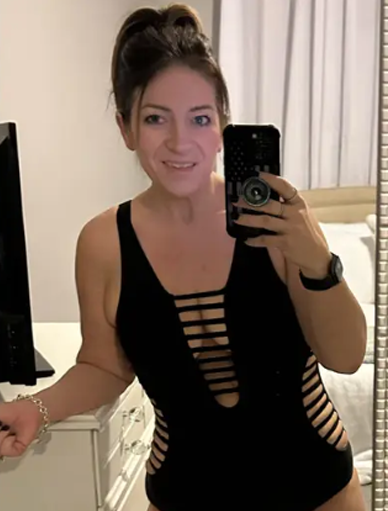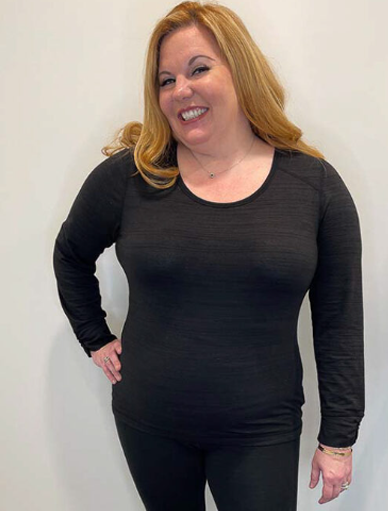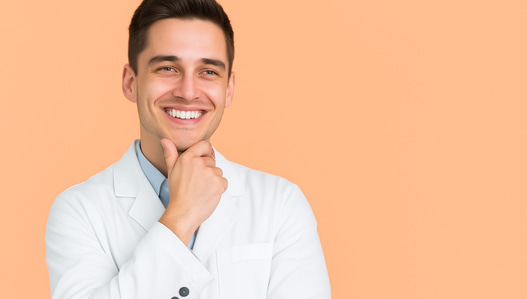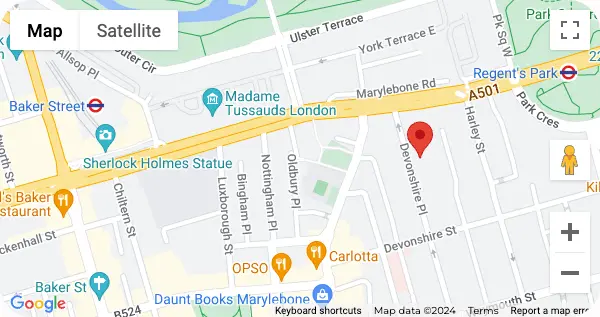Introduction
When we say Ozempic face, we mean the effect of hollow cheeks, saggy skin, and visible wrinkle marks on the face. This can happen to an individual who loses a lot of weight after using Ozempic (semaglutide). The condition is the result of depletion of the facial fat underneath the skin. To avoid having an Ozempic face, you can slowly lose weight, consume a lot of water, start with a diet that is high in protein, and have strength training as exercise. It can be treated by topical care, dermal fillers, and the use of advanced skin tighteners or surgical intervention.
What is Ozempic Face?
Ozempic face is a phrase that was encouraged via social media platforms and health experts to indicate the signs of facial ageing in someone who loses weight after taking the drug called Ozempic (semaglutide), which is a GLP-1 receptor agonist. Since Ozempic aids in regulating the level of sugar in the body and reducing hunger, it can make a person lose an impressive amount of weight very fast. Even though the drug helps in the management of obesity and type 2 diabetes, this heightened rate of fat burning may make some users have sunken cheeks, looser skin, and a worn-out, aged face.
This is usually an unintended consequence of their facial transformation, which may be a surprise to the users who otherwise feel elated due to their weight loss. Although this leads to better health of the metabolism, the unexpected ageing of the face, or the gaunt face, may influence self-esteem issues.
Origins of the Term
Coined by a cosmetic dermatologist, the term Ozempic face gained the attention of many people as celebrities and influencers started sharing their extreme facial makeovers via social media. Although this is not considered a medical diagnosis, it has been adopted as a colloquial term to describe the side effects experienced by some people who take the Ozempic drug and other GLP-1 agonists like Wegovy and Mounjaro.
The interest in the phenomenon has also been boosted by media coverage and videos on TikTok, and some before-and-after photos have gone viral. The term is meant as a warning and an icebreaker to lift the discussion between patients and professionals on the cosmetic consequences of weight loss.
Link Between Rapid Weight Loss and Facial Changes
The rate of weight loss is a major causative factor of the Ozempic face. Rapid weight loss, particularly in those who already possess a smaller initial percentage of body fat, can have the effect of resulting in an unbalanced loss of fat throughout the face. The face contains less fat in comparison to the rest of the body; hence, noticeable changes are experienced faster.
The sudden weight loss does not give the skin and the connective tissues time to adapt. Subsequently, the face that previously had full and young features will be deflated. Those people who lose more than 10% of their body weight within a short period of time are at risk.
Impact on Subcutaneous Fat and Skin Elasticity
Facial fat gives volume, structure, and a youthful outline to your face. Since Ozempic helps reduce fats, bony cheeks with a more prominent midface and temples tend to appear because the subcutaneous fat decreases. Besides, as one ages, the elasticity of the skin decreases, and when the underlying fat is lost prematurely, the skin begins to sag, develop wrinkles, and lose its elasticity.
The most affected areas are the cheeks, jawlines, and under-eye. The skin, which was supported by a cushion of fat, is no longer so, and this results in deepening of the folds and loss of contours. These changes are worsened by the fact that collagen and elastin, which make the skin firm and elastic, are naturally depleted as the person ages.
Age-Related Factors
One of the reasons why the Ozempic face is more likely to develop in older people is due to collagen and reduced elasticity. If natural ageing is combined with fat loss medication, it can increase the signs of facial ageing. Even a moderate reduction of weight in this group of people may result in an exaggerated change, providing a tired or gaunt look to the face.
People over 40 have a higher possibility of getting such effects, as the skin of the body will be unable to bounce back as it gets older. The skin tone and loss of volume can also be aggravated by hormonal fluctuations, a history of UV exposure, and lifestyle habits such as smoking or drinking alcohol.
Recognising Facial Volume Loss
The rapid decline of facial fat is one of the most visible effects reported by individuals who use Ozempic for weight loss. It is now referred to as the Ozempic face. Although this side effect does not pose any medical danger, it might be traumatic, particularly when it affects the confidence and self-esteem of individuals. Being able to identify the early signs can enable people to seek intervention on time. Common signs may include:
- Hollowed cheeks
- Deepened nasolabial folds
- Sagging skin and jowls
- Thinning of the temples
- Under-eye hollowing
- Increased wrinkling and crepey skin
Appearance of Wrinkles and Sagging Skin
The skin may loosely hang over the facial structure due to a loss of volume. Wrinkles can increase, especially around your mouth or jaw. Individuals may develop jowls or droopy skin because of sagging skin. This can also happen to any individuals who previously had firm skin.
Visual Examples and Case
The aftermath of facial volume loss has always been observed in clinical reports and aesthetic case reviews of people injecting GLP-1 drugs, including Ozempic. Even though the outcomes may be different in every individual, some visual patterns have emerged:
- Progression of fat reductions in the mid-face, jawline, and temples in before-and-after comparisons can be seen.
- Patients often report significant transformation of their faces, faces that seem older or more sunken.
- Practitioners and dermatologists have found out that rapid fat loss, most particularly on the face, can cause sagging skin, pronounced folds, and an aged appearance.
One of the most popular patient testimonies for Ozempic face ageing, a woman in her 40s, said her face aged 10 years in a few months after she began Ozempic. Despite the success of her weight loss journey, the alteration of her facial structure affected her self-perception negatively. The aesthetic expert is faced with such a matter and tends to propose custom solutions, among which are dermal fillers, biostimulatory procedures such as Sculptra, and non-surgical skin tightening techniques applied as a means to recover the natural shapes and form lost.
These cases explain the need to consider facial alteration on a whole-body approach when applying it to patients who are attaining significant weight loss. By early detection and considering proper treatment, they can surely retain their balance and healthy looks in the process of treatment.
Gradual Weight Loss Approaches
If you want to know how to avoid Ozempic face, the best strategy that can help prevent it is to strive to lose weight steadily and gradually. This allows the skin to adjust more and makes sudden changes of volume unlikely. It is usually best to aim for a 1-2 pounds weight reduction a week.
Medical professionals usually suggest taking Ozempic with a combination of a personal nutrition and fitness plan. This enables a more managed decrease in fat and reduces facial atrophy. The more gradual pace can also be reached through the adjustment of the Ozempic dose with the guidance of healthcare experts.
Importance of Hydration and Nutrition
The skin should be hydrated to maintain its elasticity. It can make your skin plump by drinking 8 glasses of water a day and taking fluids that contain electrolytes. A low-fat diet containing antioxidants and collagen-stimulating vitamins (such as C and E) and omega-3 fatty acids promotes good skin.
Protein-rich superfoods such as chicken, eggs, lentils, and tofu contain amino acids that are essential to collagen production in the body. It is also important to know that you need to consume enough calories to meet the basic metabolic needs, even in the process of weight loss, to ensure skin health.
Effective & professional doctor-led Ozempic Face at our central London clinic
Verified Before & After
Verified Before & After
Incorporation of Resistance Training
Resistance training is good for preserving muscle mass, which gives support to the structure of the face. It will help improve the posture and appearance of your face if you do exercises that target your neck, shoulders, and upper body. It is suggested to incorporate at least two strength training sessions in a week, along with taking Ozempic.
The muscles help to avoid a skinny-fat look and help hold the skeletal frame underneath your face. Growth hormones are also released during weight-bearing exercises that include squats, push-ups, and dumbbell presses, thus stimulating tissue repair.
Skincare Solutions and Topical Treatments
If you are an Ozempic taker, you may not want to have an Ozempic face because it can significantly affect your appearance and self-esteem. You can apply some skincare products to prevent the condition. It is best to take the following:
- Retinoids: Accelerate the production of collagen and enhance the texture of the skin.
- Hyaluronic acid serums: Moisturise and plump the skin.
- Vitamin C serums: They can brighten the skin and aid in collagen production.
- Peptides: Assist in the strengthening and firming of the skin
Wearing sunscreen daily is essential to avoid further degradation of collagen by the UV rays. Cosmetic procedures should be supplemented by a medical-grade skincare regimen that should reinforce the skin inside out.
Professional Interventions: Fillers, Facelifts, and Skin Tightening
If you noticed that topical treatments are not enough, you may consider professional interventions:
- Dermal Fillers: Volume loss can be filled in the midface, lines can be softened, and contours can be corrected using dermal fillers made of hyaluronic acid, like Juvederm and Restylane.
- Skin Tightening Procedures: Non-invasive ways such as Ultherapy, radiofrequency, and laser therapy stimulate collagen remodelling to have firmer skin.
- Surgical Facelift: If you have severe skin laxity and want long-lasting and more dramatic results, you may consider having a lower lift or neck lift.
Those treatments may differ in price, recovery, and durability. It is crucial to discuss the treatment with a skilled practitioner to develop a unique treatment plan that will suit your facial anatomy as well as your aesthetic goals.
Consulting with Healthcare Providers
In case you have some changes on your face at the moment you take Ozempic, you need to talk to your prescribing doctor first before doing anything. They are able to evaluate your dose and general status and determine whether it is possible to change anything. Cosmetic solutions may be assessed with the help of an aesthetic consultation with a dermatologist or a plastic surgeon.
Medical professionals can also propose the introduction of a facial massage, microneedling, or taking supplements like collagen to enhance the regeneration of the skin as a whole. It is in having the correct solution to the cause of the problem, together with the improvement of skin quality using a safe and evidence-based method.
Conclusion
Such a side effect of active weight loss by the use of semaglutide, as Ozempic face, is increasingly debated. Although it is not medically harmful, it causes problems with self-image and certainly conflicts with confidence. What is good news? It’s manageable.
People can decrease the possibility of ageing by using a slow process to lose weight, drinking enough water, focusing on skin nutrition, and strength training. Assuming there are changes, there are various skin and cosmetic therapies that can help bring back volume and firmness of the face.
Above all, remember to consult your healthcare provider whenever you wish to adjust your medication. Healthier results can be achieved both internally and externally via a combined strategy that is more holistic in nature and balances aesthetic and medical desires.
It does not matter whether you are on the first step of your weight loss Programme or you have started to see some symptoms of facial changes, the right decisions and interventions in time can ensure that you will preserve not only your health but also your appearance.
FAQS
- Is “Ozempic face” a medically recognized condition?
No, it is not medically recognised because it is a slang expression about face alterations due to extreme weight loss through the use of Ozempic.
- Can I prevent Ozempic face while on the medication?
Yes, by implementing a slow pace weight reduction plan, remaining hydrated, eating a high-protein diet, and strength training.
- What treatments are available for the Ozempic face?
There are various treatments you can use to avoid or treat the Ozempic face. These may include a skincare regimen, facial fillers, skin tightening, and plastic surgery, including a facelift.
- Should I stop taking Ozempic if I notice facial changes?
Never quit taking medication on your own. Discuss any noticeable changes you will experience with your healthcare provider; they can give you proper advice on how to manage side effects.
- Are the facial changes permanent?
Not necessarily. The facial volume and appearance can be restored, as many people can alter them with the help of proper treatment and lifestyle changes.
Reserve an ozempic appointment
One of our experts will be more than happy to answer any questions you have.
Book AppointmentDr Hasib Ur-Rub
★★★★★
The best
22nd November 2025
Emma Ashwood
★★★★★
Very informative.
21st November 2025
Harriet Steel
★★★★★
I had a fantastic experience at the Harley Street Skin clinic - everyone was super helpful and constructive
28th November 2025












